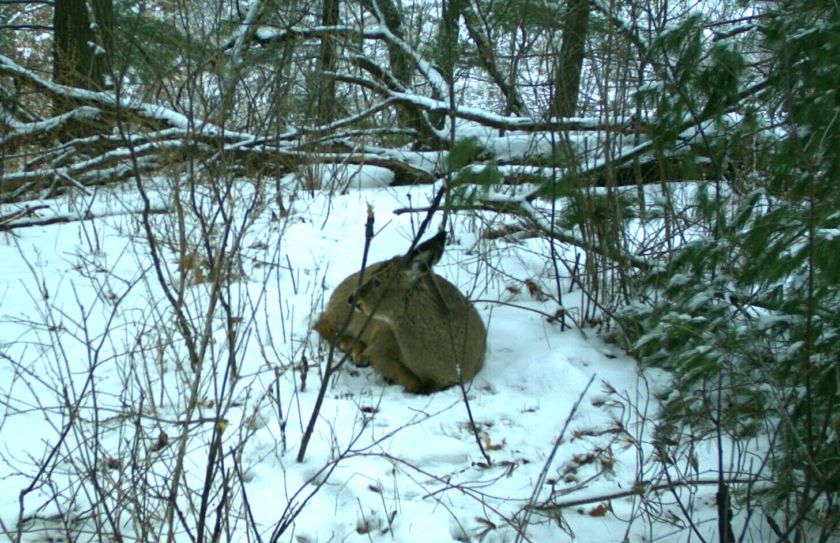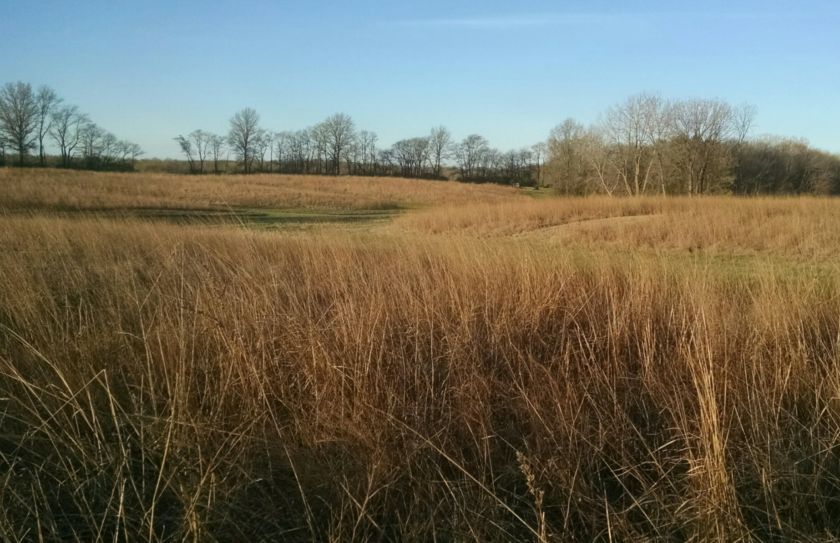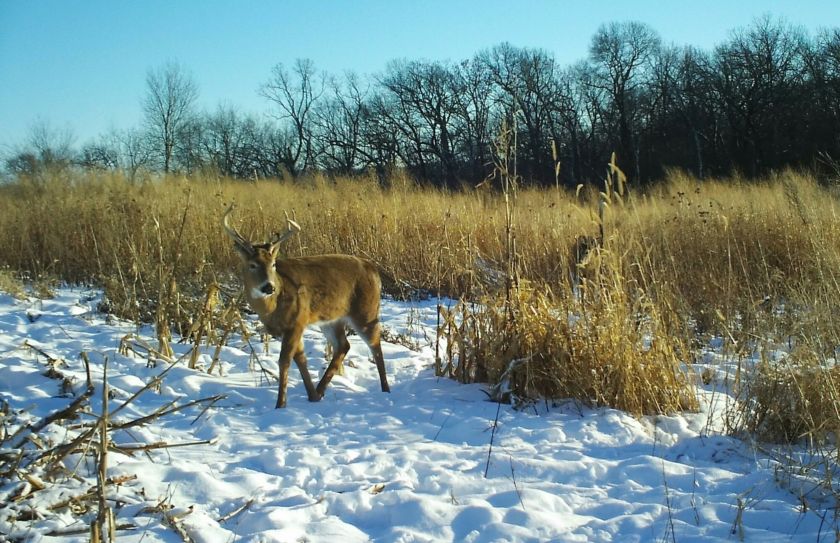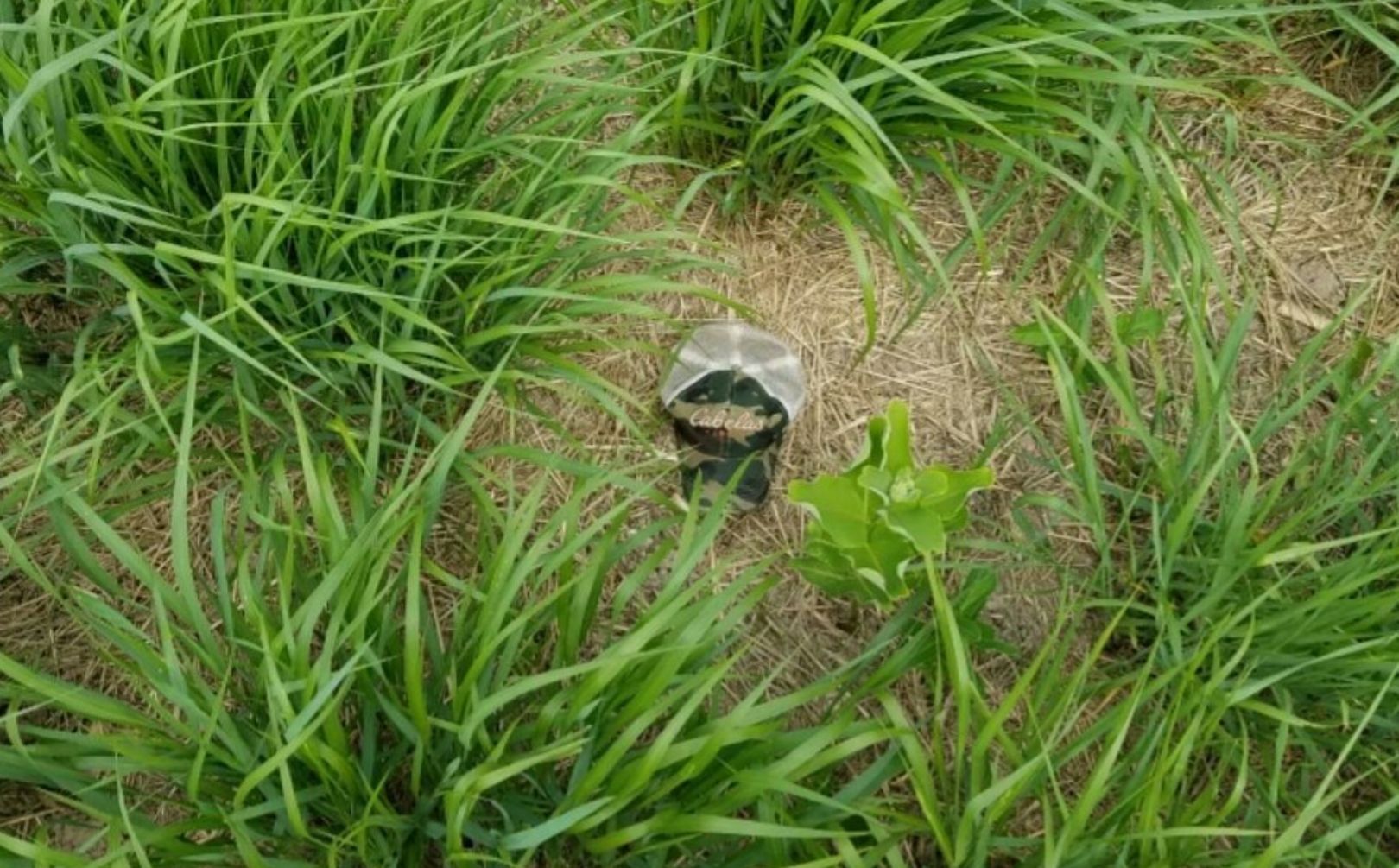
CRP and Pheasant plantings can create beautiful fields of habitat for all critters! However, if your aim falls squarely on deer beware, because most native grass plantings for deer, sorely miss their mark. There are several native grass planting basics that you need to consider, to make sure that your whitetail hunting and habitat efforts are being rewarded. And when you reward your deer efforts, don't be surprised if the bird and small game species on your land, are happy too!
Important Native Grass Planting Considerations For Deer
If you don't care to read the rest of the article, at least read this: If the grass planting that you created isn't still standing and hiding deer by the end of the hunting season, then in my experience, it was a failure - for deer, anyways! What are you trying to accomplish with your past, present or future native grass planting? By exploring the following 5 basics, my hope is to help you narrow down your priorities, so that you have a realistic chance of hitting your goals for the ultimate whitetail habitat creation.
1. Native Grass Is Not Food
Make no mistake about it, grass cover plantings for deer do not equal food. In fact, deer rarely choose to bed within native grass plantings unless forced to do so because of the lack of cover, or if there is a quality daytime forage available within or adjacent to the grass. Deer need to feed 5 times in a 24 hour period, and that includes twice within their daytime bedding areas. The fact that native grass plantings can not provide the necessary daytime browse preferred by deer is a problem. However, make sure to read to the end of this article to see how you can create a high quality grass planting that includes the perfect formula for both food and cover success!
2. Critical Timing For Your Grass Plantings
If your field of swaying green is standing tall and proud during the Summer, don't pat yourself on the back just yet. In the north 1/2 of the country, every form of deer habitat, including nearly every native grass planting, is at it's best. Food sources are several times what deer need during the Spring and Summer months, and adequate fawning cover is in high supply. Of course, hunting pressure is zero. So, deer need very little from hunters to help them enjoy their warm-season, low-stress, fat-building lifestyle. However, does your grass planting actually hide deer when they need it the most? Is your grass planting for deer, actually giving deer the cover that they crave and need, during the hunting season?
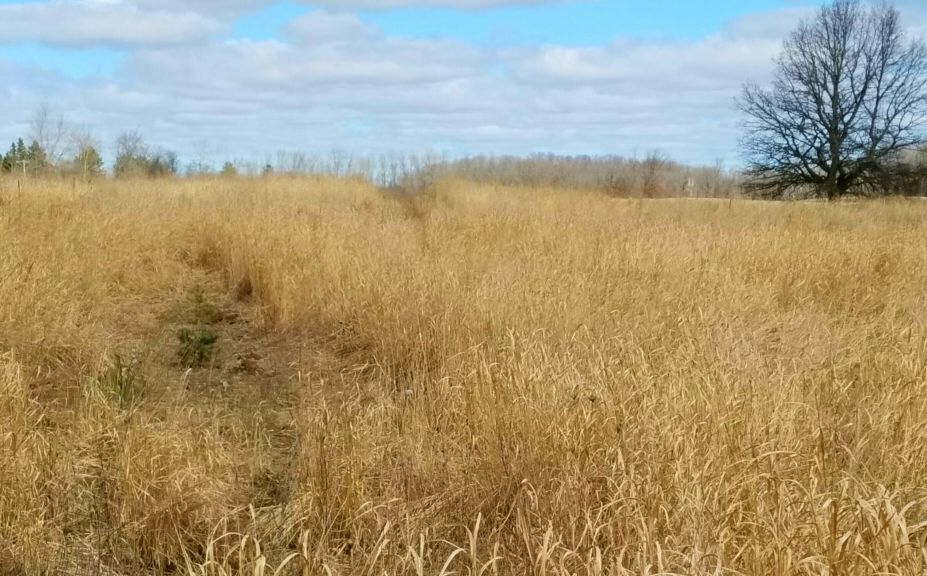
*This is a picture of a switchgrass field during the middle of March, in central MI. Notice the tall switchgrass that is still standing after a lengthy Winter and even more importantly, still standing strong enough to hide and hold deer! This field was also planted through proven frost seeding methods, which you can learn about by reading Switchgrass Plantings For Deer Bedding. Frost seeding is most likely the best way to establish a switchgrass field that will deliver the purest and fastest growing native grass planting that you can create.
3. Deer Need Quality Cover To Hide In
If your native grass planting isn't hiding deer during the hunting season (all of it), then another variety of grass is needed. Unfortunately, most diversity blends do not cut it, when it comes to providing adequate holding and hiding cover for deer. Big blue, little blue stem and indian grass combos are great for pheasants and CRP programs, but when it comes to falling into the base cover category for holding deer they fall short - in particular as soon as the heavy Autumn winds, rains and snows begin to fall! Switchgrass is the only form of native grass planting that can actually be considered a base cover, for deer. All other grasses, need not apply.
4. What Equals Bedding Cover For Deer?
Early Successional Growth (ESG) is a great buzz-phrase in the habitat and hunting industry. When an agricultural field is set asside and allowed to turn into deer habitat, great things can take place over time. However, "Time", creates a problem, because ESG can take 12-15 years or more to effectively hide deer - to become an effective form of base cover. A frost-seeded switchgrass field can become a base form of bedding cover within 18 months. A pine plantation may take 5-7 years to effectively hide deer, a stand of spruce can take 8-12 and while shrubs and hardwood regen can be great from years 3-10, they eventually age and become too open to provide adequate bedding protection. Regardless of the time it takes (I prefer quickly, myself!), bedding cover is only bedding cover, if it actually hides deer from each other, people and predators. Switch grass is the only form of native grass planting I have experienced in my travels around the north 1/2 of the country, that consistenly hides deer for the entire hunting season.
5. Deer Herds Are Built During The Hunting Season
I am a huge Qualilty Deer Management proponent. What's not to love about healthy deer, biologically balanced in harmony with their habitat? However, if you want to attract deer, hold deer, hide deer, protect deer, hunt deer and advance young bucks to the next age class, the focus of your efforts needed to create a quality herd, take place during the hunting season. Native grass plantings are no exception.
Would you believe I have been on parcels where 100 or more acres were dedicated to native grass plantings, that didn't help the landowners goals of creating a high level whitetail herd? Imagine 1/2 of a parcels acreage or more, that was contributing nothing towards either food or cover, during the majority of the hunting season! Every landowner's combination of goals are different, but rarely have a found a landowner who knowingly and willingly, took away a huge portion of their whitetail land, from deer. That is the reason I am so passionate about this topic because folks if your native grass planting isn't 100% switchgrass, you run the risk of doing more harm to your whitetail efforts, than good.
*Hinge cut bedding areas are another great option for timbered bedding areas!
The Native Grass Deer Formula For Success
Do you have an ag field to convert to deer habitat? What about a few ESG that are still 10 years or more away from providing adequate bedding structure? Would you like to actually hold deer within that old CRP field? Than a pure switchgrass field -not dilluted by other grass varieties- may be the best option. However, just like pine plantations, spruce groves and stands of red cedar there is still one major problem with switchgrass planting for deer: No food! You are in luck though, because adding quality daytime browse within switchgrass plantings can easily take place if you follow 3 simple steps:
1. Use surveying flags to create irregularly shaped pockets of an 1/8th acre to 1 acre more in size, hidden and within, the confines of your new (or old) switchgrass field. The total area of the pockets should equal 40-60% of your field's acreage and each pocket should be completely surrounded by switchgrass.
2. Do not plant switchgrass within the pockets. Whether within a current switchgrass field or not, spray a grass-specific herbicide within the pockets during late June or July. This will release the necessary broadleaves of weeds, briars and woody root-stock of shrubs and trees, to create the desired amount of browse needed for deer to be attracted to your field.
3. Add small clusters of conifers or shrubs within the pockets, but this is not necessary. Why? Because ESG will take place within the pockets, delivering enough daytime forage to be utilized by deer bedding within the grass nearby.
By creating the diversity pockets within your switchgrass planting, you can create a high-powered food/cover combo within 18 months. In fact, I have personally seen fields of switchgrass that have reached heights of 4-5' in the very first season! By hiding deer within grass during the entire hunting season, combined with adeqaute daytime forage within the bedding area, you can create a powerful 1-2 punch of attraction and protection that is incredible! The same concept can even be applied to red cedar, pine and spruce. The conifer then becomes the base bedding structure, while the diversity pockets are cleared and sprayed to add quality forms of daytime browse.
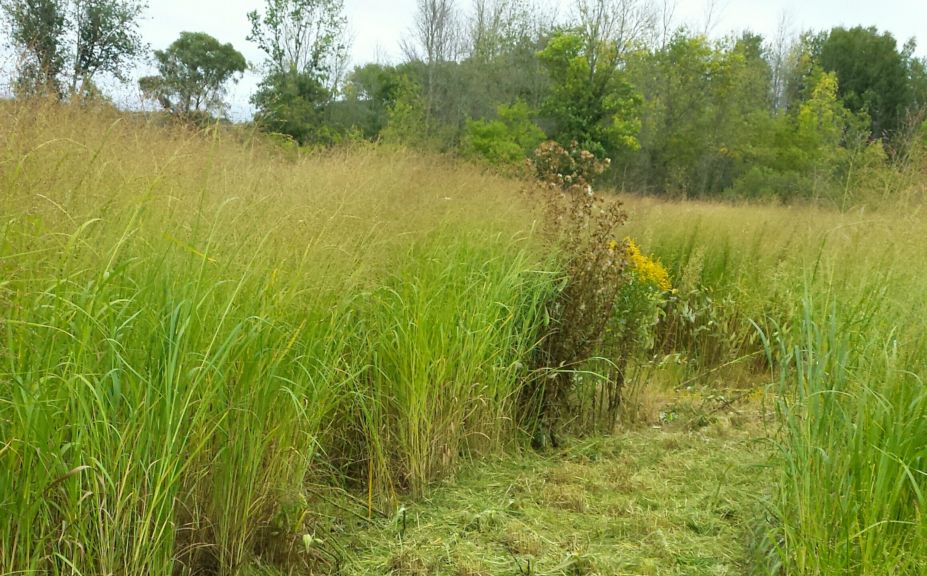
*Mowing "deer trails" through your switchgrass planting can be an outstading way to create defined travel right by your bowstands. For more strategies for creating travel within bowrange, make sure to check out Travel Corridors For Deer.
Conclusion
It is critical that you consider all of the basics, in order to create an effective native grass planting for deer. An easy test is if your native grass field is still attracting deer, hiding deer and bedding deer during the daytime at the end of the hunting season. However, if it is not, consider the basics explored in this article so that you can create a habitat improvement that compliments your herd, habitat and hunting efforts. Your planting needs to hide deer within the inside, feed deer through the use of quality daytime browse pockets and it needs to be available when the deer need it the most - during the hunting season. When you find the winning formula, you will find that deer aren't the only critters the benefit. If birds and small game animals could speak, they would thank you too!

*If you're truly interested in bettering your habitat, herd, and hunting success, be sure to check out my trilogy of Advanced Whitetail Strategy books, including my latest, "Mature Buck Success by Design".
